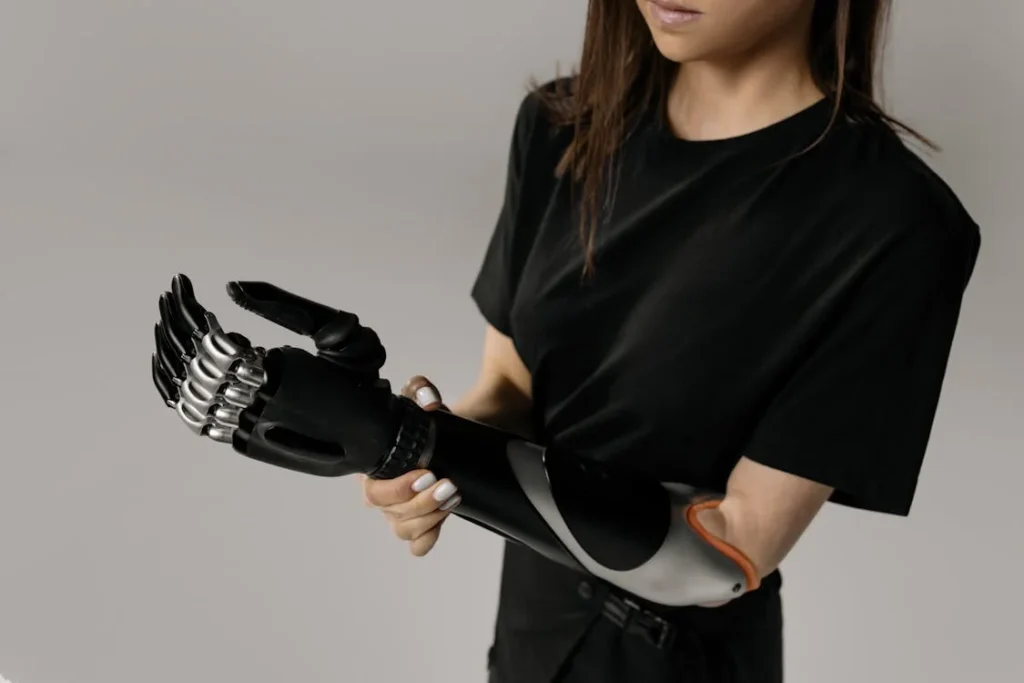Prosthetic technology has come a long way. From simple wooden limbs to advanced bionic hands that can move with thought, the field is evolving at an incredible pace. But what comes next? The future of prosthetics is heading toward a fascinating intersection between bionics and robotics—two fields that are redefining what artificial limbs can do.
Bionics focuses on merging biology with technology, allowing prosthetics to work naturally with the human body. Robotics, on the other hand, leans toward autonomous movement and artificial intelligence, pushing the limits of what mechanical limbs can achieve. As these technologies advance, the line between them is becoming increasingly blurred.
Will future prosthetics allow users to feel touch the way natural limbs do? Could robotic limbs move independently, assisting users in ways never seen before? And how will artificial intelligence play a role in making prosthetics more intuitive?
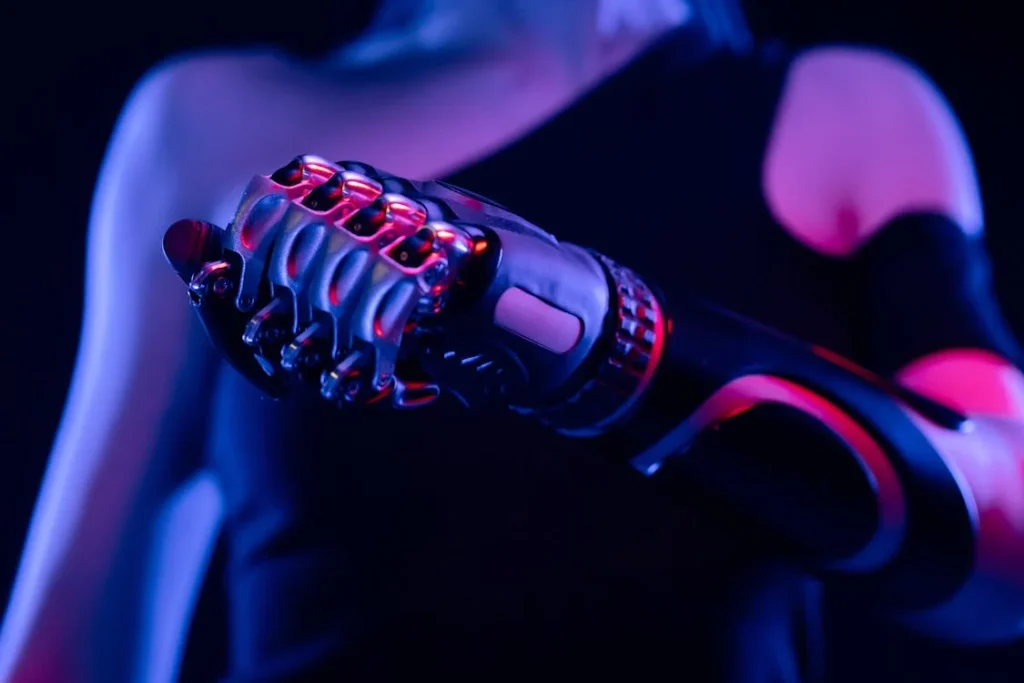
The Evolution of Prosthetic Technology: From Function to Intelligence
Prosthetic limbs were once designed with a single goal—restoring basic function. Early artificial limbs provided support but lacked movement. Over time, mechanical designs improved, allowing for greater mobility.
Today, bionic technology has taken prosthetics far beyond simple replacements, enabling users to control their limbs with muscle signals, move naturally, and even experience sensory feedback.
But the next frontier goes even further—integrating robotics and artificial intelligence to create prosthetics that not only respond but also think and adapt.
How Bionics Have Transformed Prosthetic Limbs
Bionics have revolutionized prosthetics by making them more connected to the human body.
Unlike traditional artificial limbs that rely on mechanical movement, bionic prosthetics use electrical signals from the brain or muscles to control movement. This allows users to operate their prosthetic limbs in a way that feels natural.
Myoelectric technology, one of the major breakthroughs in bionics, allows a prosthetic limb to detect muscle activity and convert it into movement.
This means that when a user thinks about opening their hand, the prosthetic responds as if it were a real limb. With practice, users can perform tasks like gripping a cup, typing on a keyboard, or even playing musical instruments.
Another major advancement in bionics is sensory feedback. Some of today’s most advanced prosthetic hands use tiny sensors to detect pressure and texture, sending signals back to the user’s nervous system.
This means that a prosthetic hand could allow someone to feel the firmness of a handshake or the softness of fabric. While still in the early stages, this technology is paving the way for prosthetic limbs that provide a true sense of touch.
Where Robotics Comes In: The Role of Automation and AI
Robotics takes prosthetic technology beyond simple movement. While bionics focus on connecting artificial limbs to the human body, robotics aims to make prosthetics smarter, more autonomous, and even self-learning.
One of the biggest challenges for prosthetic users is performing multiple complex movements at once.
While current bionic limbs can open and close fingers, robotic prosthetics are being developed to predict intent using artificial intelligence.
This means a robotic hand could automatically adjust grip strength based on the object being held—without requiring conscious effort from the user.
AI-driven prosthetics could also learn from the user’s movements over time. By analyzing muscle patterns and movement habits, future prosthetic limbs may be able to anticipate actions and move seamlessly without requiring constant mental focus.
Imagine a prosthetic leg that automatically adjusts for balance when walking on uneven surfaces or a robotic arm that subtly corrects positioning for improved precision.
The fusion of bionics and robotics is making prosthetic limbs more powerful, but it also raises new questions. How much control should users have over an intelligent prosthetic? Should robotic limbs be fully independent, or should they always require direct input from the user?

Merging Bionics and Robotics: The Future of Intelligent Prosthetics
As bionics and robotics continue to advance, the distinction between the two is becoming less clear. What was once considered a simple assistive device is evolving into an intelligent system that works seamlessly with the human body.
Future prosthetics will not only restore movement but also enhance human capability, offering levels of precision, adaptability, and sensory feedback that were once thought impossible.
Mind-Controlled Prosthetics: The Next Leap in Bionic Technology
One of the most exciting developments in prosthetic technology is the rise of brain-machine interfaces (BMI). This technology allows users to control their prosthetic limbs directly with their thoughts, bypassing the need for muscle signals.
While myoelectric prosthetics rely on sensors detecting muscle contractions, BMI-based prosthetics read neural activity from the brain itself, offering faster and more natural responses.
Researchers are already testing implants that allow amputees to control robotic arms just by imagining movement. This means a person could reach for an object, shake hands, or even play an instrument without thinking about individual muscle contractions.
The goal is to make movement so seamless that prosthetic users feel as though their artificial limb is truly a part of them.
The Role of Artificial Intelligence in Smart Prosthetics
AI is becoming a key player in prosthetic technology, helping to improve adaptability, efficiency, and user experience. Prosthetic limbs powered by AI can analyze movement patterns, muscle activity, and environmental conditions to make real-time adjustments.
For example, a robotic prosthetic leg equipped with AI could automatically adjust walking speed based on terrain, reducing the need for manual input.
A prosthetic hand could detect grip pressure and fine-tune its strength based on the object it holds—squeezing a fragile cup gently while applying a firm grip to a heavier item.
AI also has the potential to improve rehabilitation and training for prosthetic users. By collecting data on a user’s movement patterns, smart prosthetics could provide feedback and suggestions to help improve efficiency and comfort.
This could be especially useful for new users who are still learning to integrate their prosthetic limb into daily life.
Can Prosthetic Limbs Become Better Than Biological Ones?
As prosthetic limbs become smarter, faster, and more responsive, a new question arises—could artificial limbs one day surpass biological ones? While today’s prosthetics aim to restore lost function, future prosthetics could potentially enhance human ability beyond natural limits.
Imagine a prosthetic arm that provides superhuman strength, allowing users to lift heavier objects with ease. Or a bionic leg with built-in shock absorption, enabling users to run without fatigue.
With AI-driven enhancements, prosthetic limbs may become faster, stronger, and more adaptable than natural human limbs.
This raises ethical questions about how these technologies should be used.
Should prosthetic limbs be designed to simply replace lost function, or should they offer enhancements that give users an advantage? Will people without limb loss choose to replace biological limbs with bionic ones for performance benefits?
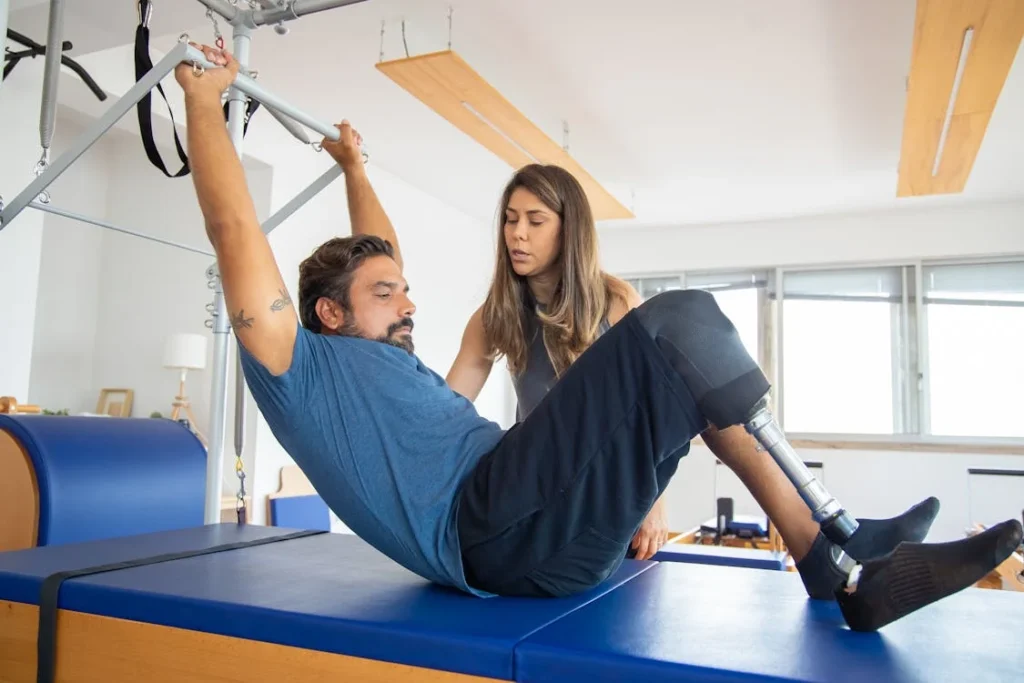
Ethical and Social Considerations of Advanced Prosthetics
As bionic and robotic prosthetics continue to evolve, society must grapple with new ethical questions.
While these technologies have the potential to dramatically improve the lives of amputees, they also challenge traditional ideas about disability, human enhancement, and fairness in competitive fields.
Prosthetics vs. Human Augmentation: Where Do We Draw the Line?
For decades, prosthetics have been designed to restore lost function, aiming to bring users as close to natural movement as possible. But what happens when prosthetics surpass human limitations?
If a bionic limb can provide greater strength, endurance, or precision than a biological limb, does it shift from being a medical necessity to an enhancement tool?
This question is already being debated in sports. Athletes with advanced prosthetic limbs, such as Paralympians, often face scrutiny over whether their technology gives them an unfair advantage over competitors with natural limbs.
Some argue that a prosthetic limb with optimized biomechanics or shock absorption could allow for greater efficiency in movement, raising questions about how to regulate the use of advanced prosthetics in professional competitions.
Beyond sports, the potential for human augmentation brings ethical dilemmas in other areas of life. Could workers in physically demanding jobs, such as construction or manufacturing, be required to use enhanced prosthetic limbs to improve productivity?
Could bionic enhancements become desirable in professions that require precision, such as surgery or engineering?
These possibilities raise concerns about whether advanced prosthetics should remain purely medical or if they could become commercialized enhancements available to anyone willing to adopt them.
The Cost and Accessibility of High-Tech Prosthetics
One of the biggest challenges facing the future of prosthetic technology is accessibility. While bionic and robotic prosthetics offer groundbreaking capabilities, they often come with high costs that make them inaccessible to many users.
Even today, advanced prosthetic limbs can cost tens of thousands of dollars, putting them out of reach for those without financial support or insurance coverage.
As technology improves, researchers and manufacturers are working on making affordable prosthetic solutions without sacrificing quality.
Innovations in 3D printing have already helped lower costs, allowing for customizable prosthetic limbs to be produced more efficiently.
Organizations are also focusing on modular designs, which enable users to upgrade parts of their prosthetic over time instead of replacing the entire limb.
At Robobionics, we believe that accessibility should be at the heart of prosthetic innovation. Our goal is to bridge the gap between cutting-edge technology and affordable, high-quality prosthetics that empower users without financial burden.
The future of prosthetic technology should be one where everyone, regardless of income, has access to life-changing advancements.
Redefining Disability in a World of Advanced Prosthetics
As bionic and robotic prosthetics become more advanced, society’s perception of disability is evolving. In the past, prosthetic limbs were seen as purely corrective devices, but today, they are increasingly viewed as tools of empowerment.
Instead of focusing on limitations, many prosthetic users now embrace their bionic limbs as a unique strength.
This shift is influencing how people with limb differences are represented in media, the workplace, and social settings. No longer defined by what they lack, individuals using advanced prosthetics are being recognized for their abilities, creativity, and resilience.
This cultural change is helping to eliminate stigma and foster a world where prosthetic users are seen as equals, not exceptions.
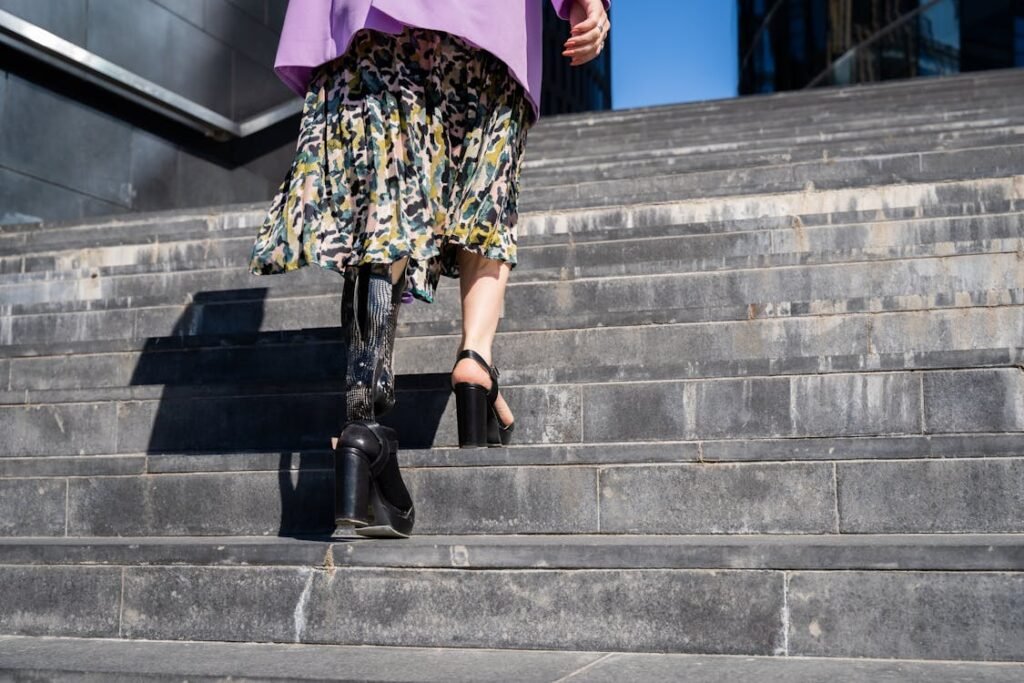
The Road Ahead: What the Future Holds for Prosthetic Technology
As bionics and robotics continue to merge, the future of prosthetic technology looks more promising than ever.
Scientists, engineers, and medical professionals are working toward a new era where artificial limbs are not just functional replacements but fully integrated extensions of the human body.
The next breakthroughs in prosthetics will focus on better connectivity, smarter automation, and deeper sensory integration, bringing users closer to experiencing natural movement and touch.
Neural Integration: Closing the Gap Between Mind and Machine
One of the most exciting areas of research in prosthetic development is neural integration—the ability to connect artificial limbs directly to the nervous system.
Unlike current bionic limbs that rely on muscle signals, neural integration will allow direct brain control of prosthetics, creating a seamless and natural experience.
Some of the world’s leading research labs are already testing brain-computer interfaces (BCIs) that allow prosthetic users to control their limbs purely through thought commands.
Instead of consciously focusing on individual movements, users could simply intend to move their fingers or walk, and the prosthetic would respond instantly, just like a natural limb.
Neural integration will also improve sensory feedback, making it possible for users to experience temperature, texture, and pressure. In the future, a person with a bionic hand may be able to feel the warmth of a cup of coffee or distinguish between rough and smooth surfaces.
This advancement will not only enhance everyday interactions but also create a deeper emotional connection between users and their prosthetics.
Self-Learning Prosthetics: The Role of Artificial Intelligence
Artificial intelligence is set to make prosthetic limbs more adaptive and autonomous. AI-powered prosthetics will be able to learn from a user’s habits, making adjustments in real time to improve efficiency and comfort.
Imagine a prosthetic leg that can predict terrain changes and automatically shift its gait to match the walking surface. Or a robotic arm that adapts its grip strength based on the object being held, ensuring delicate items aren’t crushed.
These smart prosthetics will reduce the mental effort required for movement, making everyday tasks feel more natural and effortless.
AI could also play a key role in rehabilitation and prosthetic training.
Many new prosthetic users struggle with adapting to their artificial limbs, but AI-powered systems could provide real-time feedback, guiding them through exercises and suggesting personalized adjustments to improve movement over time.
The Potential for Full-Limb Regeneration
While prosthetic technology is advancing rapidly, another field is emerging that could redefine limb replacement entirely—bioengineered limbs.
Researchers are exploring ways to grow and regenerate human tissue, potentially leading to the ability to replace lost limbs with biological counterparts grown from a patient’s own cells.
Although still in its early stages, this research raises fascinating possibilities. Could the future hold a world where people no longer need prosthetic limbs because lost limbs can be regrown?
Or will prosthetics evolve to a point where they offer superior capabilities to natural limbs, making them the preferred choice?
These questions highlight the exciting yet complex future of prosthetic technology. Whether through smarter bionic limbs, AI-driven robotics, or biological regeneration, the field is on the brink of transforming human mobility forever.
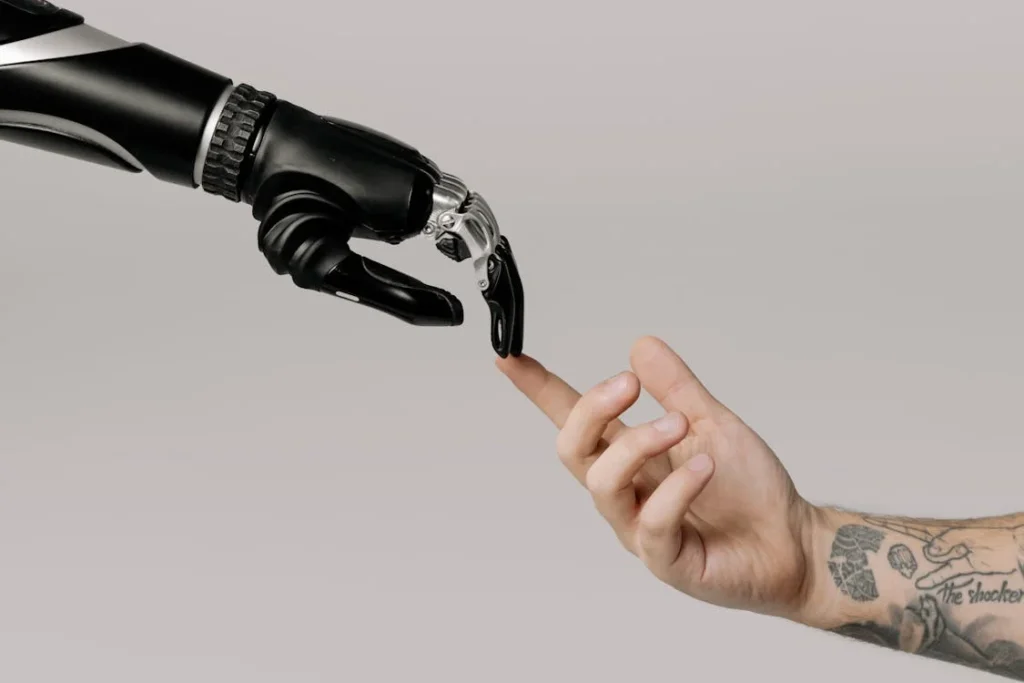
Blurring the Line Between Human and Machine
As prosthetic technology advances, we are moving toward a future where the line between human biology and robotics becomes less distinct. What was once purely science fiction—bionic limbs that function as well as, or better than, natural ones—is now within reach.
This evolution raises important questions about identity, human enhancement, and the role of technology in shaping our future.
Will Bionic Limbs Become a Choice Rather Than a Necessity?
Historically, prosthetic limbs were designed for those who had lost a limb due to injury, illness, or birth conditions.
But as prosthetics become more advanced, some experts predict that people might choose bionic limbs for performance benefits, even if they have fully functional natural limbs.
This concept, known as elective bionics, could redefine the way society views prosthetics. If artificial limbs offer superior strength, speed, or endurance, could they become a competitive advantage in sports, industry, or everyday life?
Would individuals voluntarily replace natural limbs with bionic ones to gain enhanced abilities?
This shift could lead to new social and ethical debates about human augmentation, much like discussions surrounding performance-enhancing drugs in athletics.
If a prosthetic limb allows a runner to move faster than humanly possible or a worker to lift extreme weights without fatigue, where do we draw the line between medical necessity and enhancement?
The Role of Ethics in Advanced Prosthetic Development
The increasing capabilities of prosthetics bring about critical ethical concerns. Who should have access to the most advanced prosthetic technology? Should enhancements be available only for medical needs, or should people be allowed to upgrade their bodies voluntarily?
And how do we ensure that these advancements do not create a divide between those who can afford enhancements and those who cannot?
Prosthetic manufacturers, policymakers, and scientists will need to collaborate on guidelines that balance innovation with fairness and accessibility.
Regulations may need to be developed to define the limits of prosthetic enhancements, especially in fields like sports, law enforcement, and military applications.
A Future Where Prosthetics Are Fully Integrated into Society
As technology improves, prosthetic limbs will no longer be seen as assistive devices, but as natural extensions of the body.
The perception of limb differences is already shifting, with prosthetic users increasingly viewed as pioneers of human-machine integration rather than individuals with disabilities.
In the coming decades, society will likely see more people using advanced prosthetics in all aspects of life—at work, in sports, in creative fields, and beyond.
Cultural acceptance of prosthetics as a form of self-expression is also growing, with users personalizing their bionic limbs with unique designs, colors, and materials.
At Robobionics, we are excited to be part of this transformation. Our mission is to create prosthetic solutions that do more than just restore mobility—they empower people to live without limits.
The Psychological Connection Between Users and Their Bionic Prosthetics
As prosthetic technology advances, the relationship between users and their artificial limbs is changing in profound ways. What was once viewed as an external tool is increasingly being seen as an integrated part of the self.
This shift has deep implications for mental health, identity, and emotional well-being.
From Tool to Extension: The Changing Perception of Prosthetics
Traditional prosthetic users often describe a feeling of detachment from their artificial limbs. The lack of movement, sensation, or natural interaction made these devices feel foreign—something to be worn rather than truly used.
However, as bionic technology improves, prosthetic limbs are becoming more intuitive and responsive, leading to a deeper psychological connection between the user and the device.
Bionic limbs that respond to muscle signals, brain activity, and even provide sensory feedback create an experience that feels more natural.
Users begin to trust their prosthetic limbs, relying on them in ways that were once impossible. This shift leads to a new sense of embodiment, where the prosthetic becomes an extension of the user rather than a separate object.
For many, this transformation is empowering. Individuals who once struggled with self-image or confidence after limb loss often find that bionic technology restores not only function but also a sense of self.
Some users even describe their prosthetics as an enhancement rather than a replacement, taking pride in the advanced capabilities their limbs provide.
The Impact of Sensory Feedback on Emotional Well-Being
One of the most groundbreaking advancements in prosthetic technology is sensory feedback, which allows users to experience touch, temperature, and pressure through their artificial limbs.
This development goes beyond functionality—it provides an emotional connection to the world.
The ability to feel a loved one’s hand, detect the pressure of an object, or sense environmental changes brings a profound psychological shift.
Users report feeling more engaged in their surroundings, experiencing a greater sense of normalcy in daily interactions. The emotional impact of this cannot be overstated—restoring sensation through prosthetics helps reduce feelings of isolation and strengthens social bonds.
The Role of Personalization and Self-Expression
As prosthetic limbs become more advanced, they are also becoming more customizable. Many users are now personalizing their bionic limbs with unique colors, artistic designs, or even embedded technology like LED lighting.
This trend shifts the narrative around prosthetics from being purely medical devices to symbols of self-expression and identity.
For some, a prosthetic limb is no longer something to hide—it is something to showcase. The ability to personalize prosthetics allows users to reclaim control over their appearance and redefine what it means to live with limb loss.
Instead of being seen as a disability, prosthetic limbs are increasingly viewed as an extension of personal style, confidence, and innovation.
At Robobionics, we understand that prosthetics are more than just functional tools. They are part of a person’s journey, identity, and daily life.
By developing intuitive, customizable, and emotionally connected prosthetic solutions, we aim to empower users to feel confident, capable, and limitless.
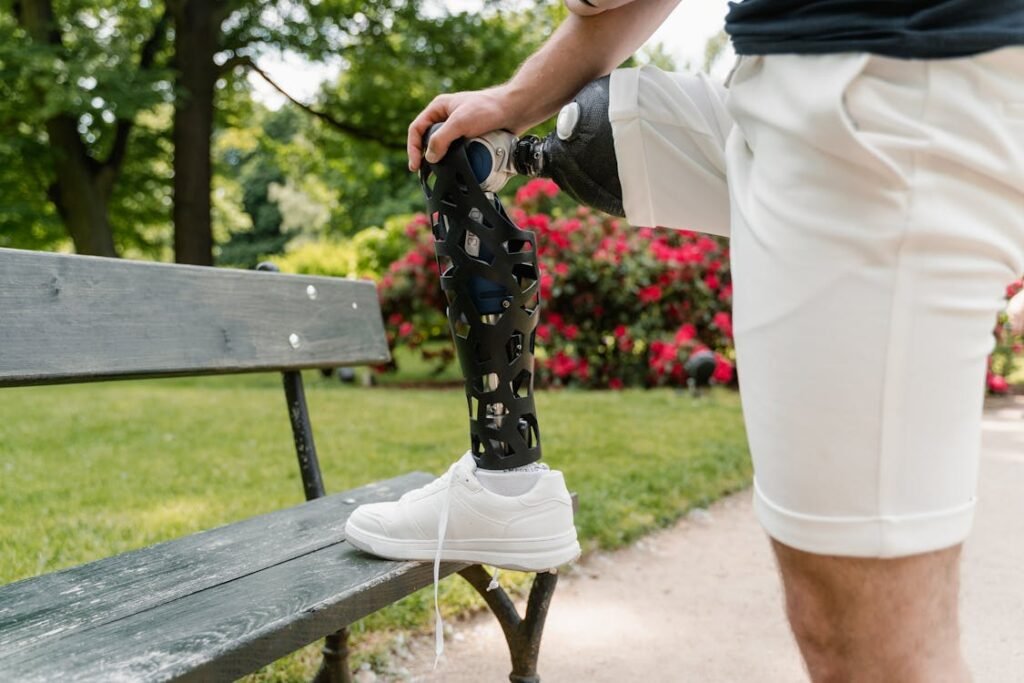
Conclusion
The future of prosthetic technology is not just about movement—it’s about integration, intelligence, and identity. As bionics and robotics merge, prosthetic limbs are evolving into natural extensions of the human body, offering enhanced functionality, sensory feedback, and even self-learning capabilities. These advancements are reshaping not only mobility but also the way users perceive themselves and interact with the world.
Beyond restoring function, modern prosthetics empower individuals with confidence, independence, and self-expression. With personalized designs, intuitive controls, and AI-driven adaptability, users are no longer just adapting to their prosthetics—they are redefining what is possible.
At Robobionics, we are committed to pushing the boundaries of innovation, ensuring that prosthetic users experience not just restoration but transformation. If you’re ready to explore the next generation of bionic technology, contact us today and take the first step toward a future without limits!



